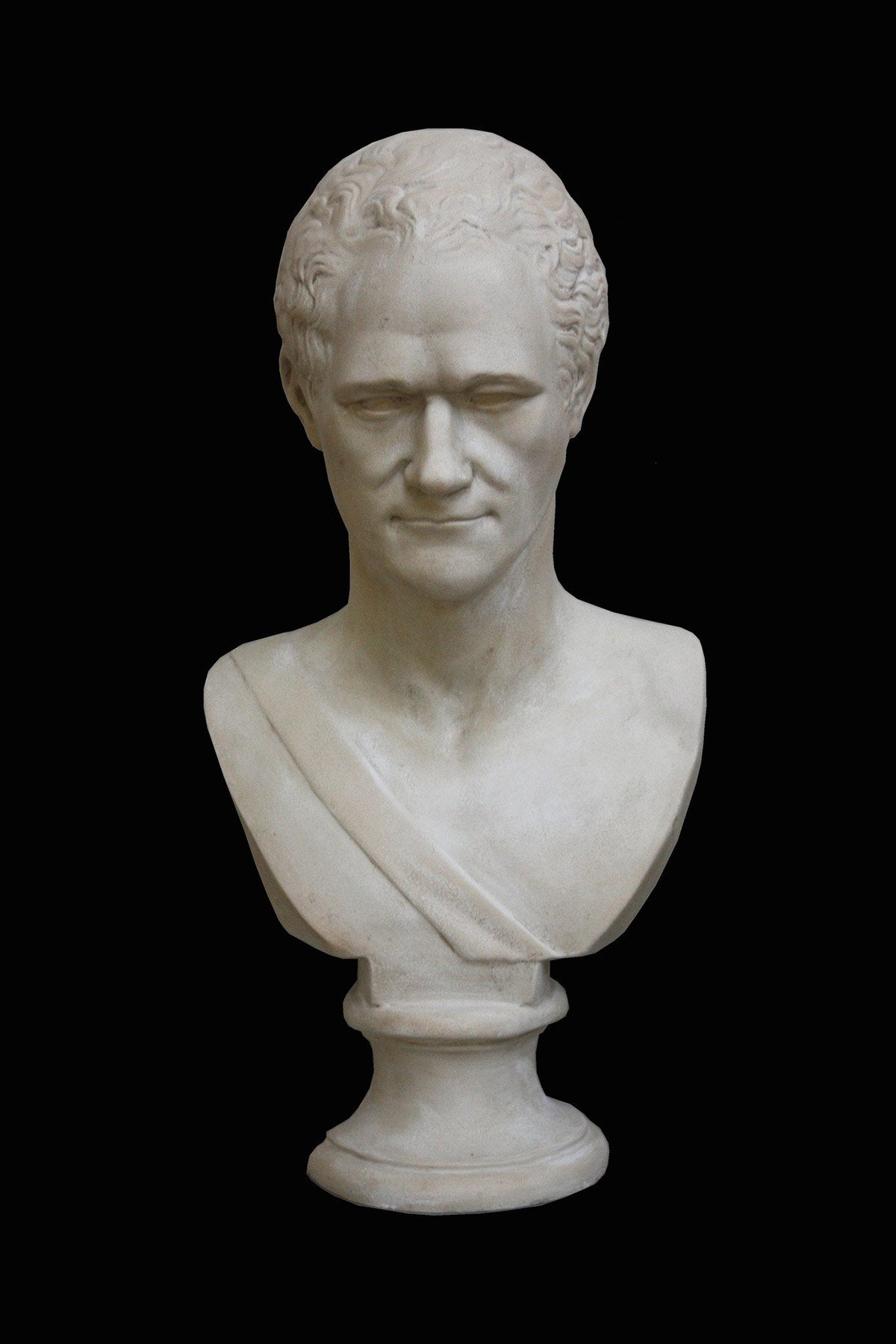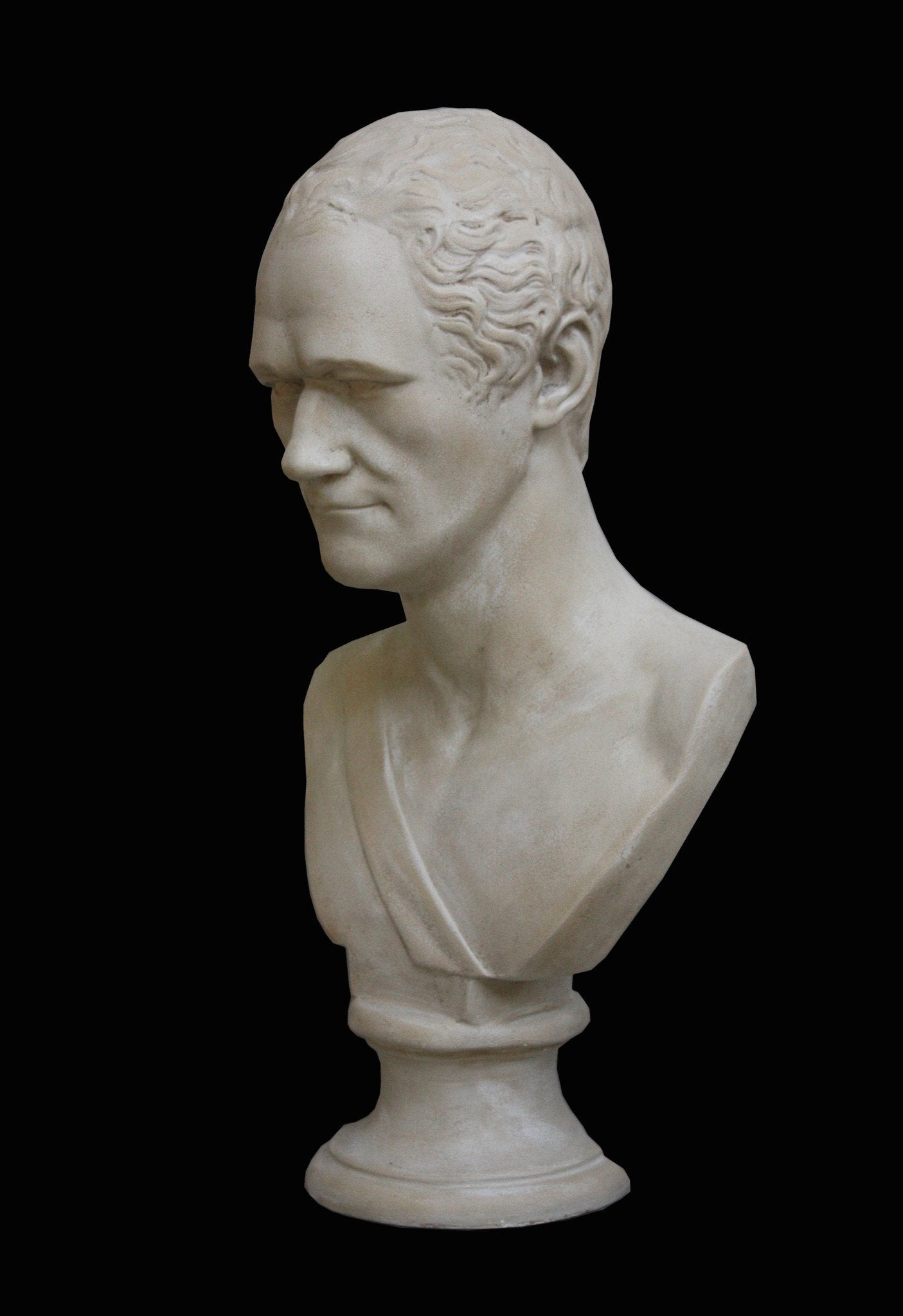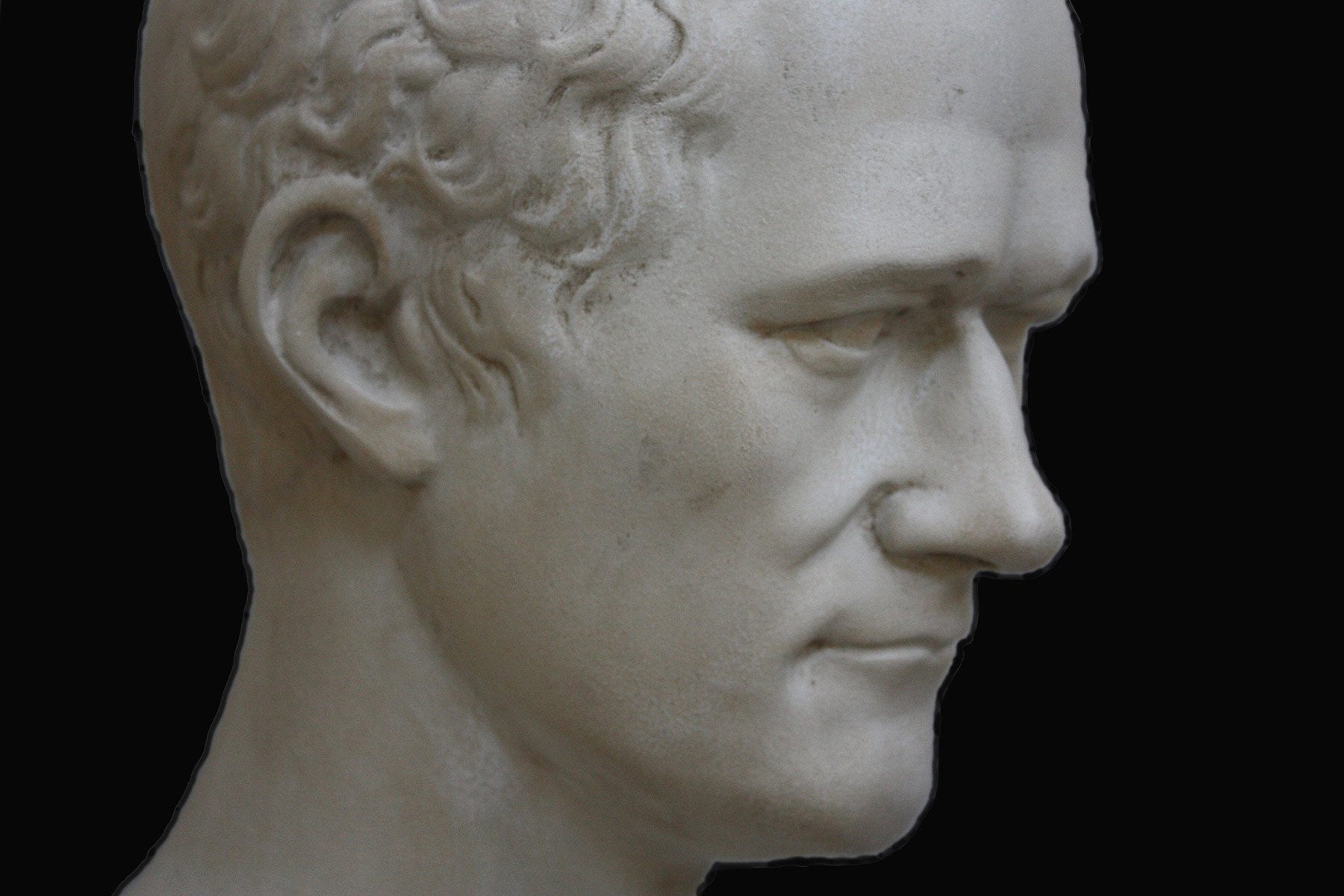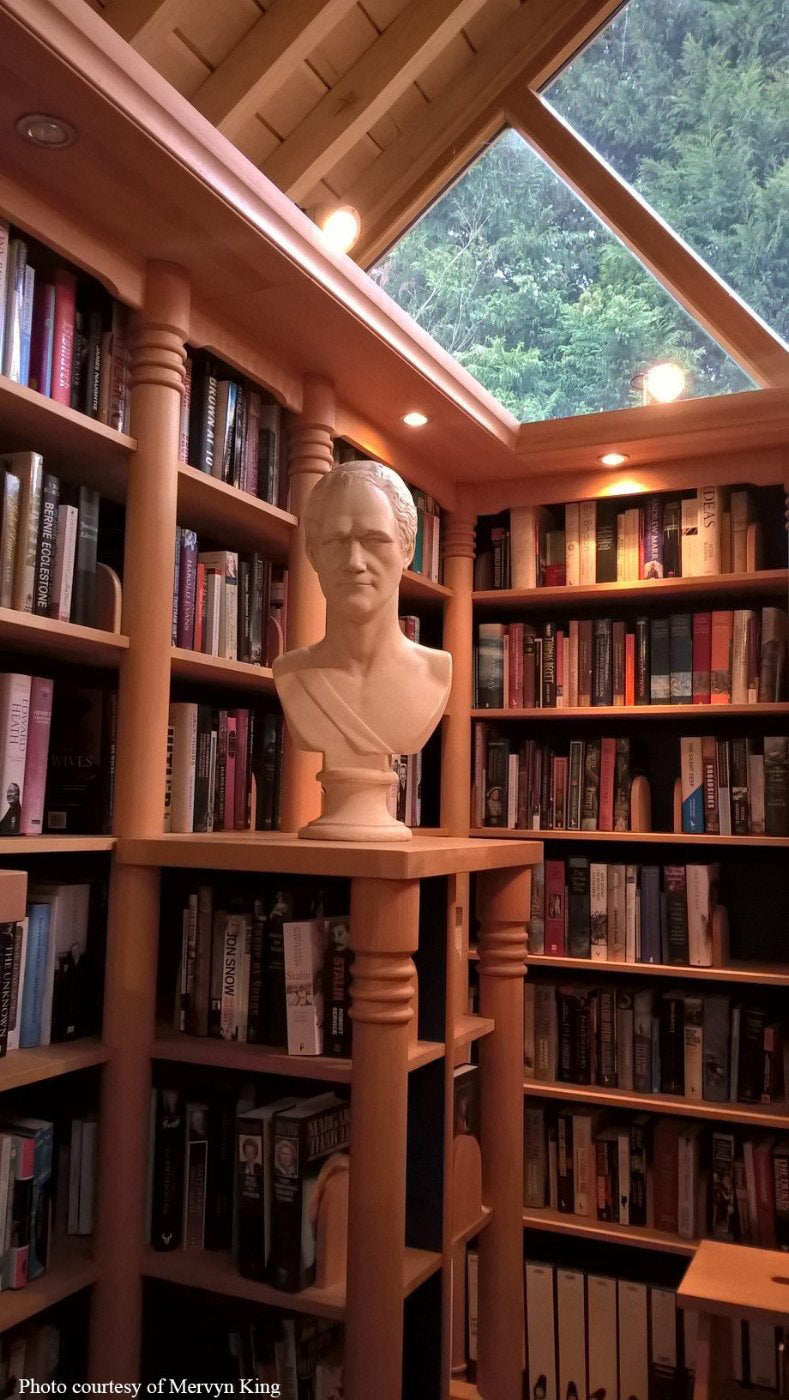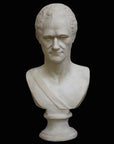
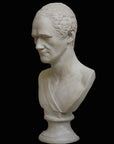
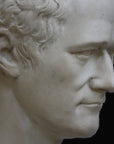
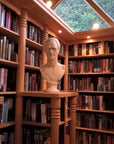
Alexander Hamilton - Item #207
26 Inches High x 13 Inches Wide x 11 Inches Deep
Several marble and plaster copies of this life-sized bust of Hamilton (1755/1757-1804) exist in museums today. Jefferson placed a copy at his home, Monticello, opposite a larger bust of himself, also by Giuseppe Ceracchi (1751-1801), and this juxtaposition confirmed the rivalry between the two. Many artists based later portraits of Hamilton on this bust, which is considered to be the best likeness of him. Here he is shown as a classical, heroic nude, save for the strap crossing his chest. The classical portraiture style was a popular choice for political figures in the 18th and 19th centuries as it reflected the antique portraits of the founders of Western democracy. In 1870, the bust was featured on the thirty-cent U.S. postage stamp.
One of the Founding Fathers of America, Alexander Hamilton was born out of wedlock in the British West Indies in 1757. He came to America at the age of 16 to study, and shortly after entered Kings College (what is now Columbia University). Hamilton became interested in the political atmosphere and favored the Patriot cause, writing his first article on the subject in 1774. He left Kings College to aid the Patriots, joining the military in 1775, and he was later promoted to lieutenant colonel of the Continental Army in 1777. Impressed with Hamilton, General George Washington made him his personal adviser. A few years later Hamilton married Elizabeth Schuyler, the daughter of Philip Schuyler who was a landholder in New York and a military officer. They would have eight children.
After the war, Hamilton passed the bar exam in New York to become a lawyer. He defended Loyalists in several cases, which brought about the judicial review system and principles of due process. He joined other delegates in Philadelphia in 1787 to discuss the Articles of Confederation, which Hamilton deemed the cause of Congress’s weakness. He believed that a strong central government would lead America to independence. He wrote over two-thirds of the 85 essays in “The Federalist,” the rest of which were written by John Jay and James Madison. The essays were published in New York newspapers between 1787 and 1788, and pushed for ratification of the Constitution. Hamilton, with his skills as an orator, led New York to ratifying it during its convention in 1788, and the other eight states later followed.
When Washington became president in 1789, he named Hamilton the first Secretary of the Treasury. He saved the new country from ruin with the monetary policy he created. In 1798 when war with France seemed inevitable, Washington named Hamilton acting commander of the U.S. Army.
During his time as Secretary, Hamilton clashed often with Thomas Jefferson. When Jefferson ran for president in 1800, Hamilton decided Jefferson was better suited than his old enemy, Aaron Burr. Jefferson won and Burr ended up becoming vice president. After Burr ran for the New York governorship four years later and lost, he read a description Hamilton had given of Burr in a newspaper, calling him “unfit” and “dangerous,” and challenged him to a duel. Hamilton agreed and was shot during the altercation, dying from his wounds the next day on July 12, 1804.
Artist: Giuseppe Ceracchi
Museum: Thomas Jefferson's Monticello, and Crystal Bridges Museum of American Art, Arkansas
Time Period: Modern- 1794
1911 Catalog ID # - 5425
Sources:
"Alexander Hamilton." Museum accession number 2005.23. Crystal Bridges Museum of American Art,
http://collection.crystalbridges.org/objects/189/alexander-hamilton?ctx=1f96bed7-0726-41de-93bc-34914fefb93d&idx=0.
"Alexander Hamilton (1755-1804), a Profile." WGBH American Experience, http://www.pbs.org/wgbh/americanexperience/features/profile-alexander-hamilton-1755-1804/.
"Alexander Hamilton Biography.com." Biography.com, https://www.biography.com/people/alexander-hamilton-9326481.
Stein, Susan R. The Worlds of Thomas Jefferson at Monticello. Thomas Jefferson Foundation, Harry N. Abrams, Inc., 1993, pp. 219. Monticello, https://www.monticello.org/site/research-and-collections/alexander-hamilton-bust-sculpture.
Torbert, Amy. "Satisfied: Giuseppe Ceracchi's Bust of Alexander Hamilton." Crystal Bridges Museum of American Art, 2015-2016, https://crystalbridges.org/blog/satisfied-giuseppe-caracchis-bust-of-alexander-hamilton/.
"Treasury's Hamilton Bust." U.S. Department of the Treasury, https://www.treasury.gov/about/history/collections/Pages/Treasury's-Hamilton-Bust.aspx.
Pieces are plaster unless otherwise noted. They are made to order and hand cast. We offer our pieces in a variety of patinas/finishes.
Masks and small and large reliefs (except tabletop pieces as noted) come with at least one embedded hook for hanging unless otherwise noted. For all other pieces, like anatomical casts, refer to the product pages.
Questions? View the FAQ page for more information and for answers to frequently asked questions. Email us at contact@capronicollection.com or call us at 781-933-2455.
View the patina/finish options for your hand-made reproduction here or above. Be sure to make your selection when adding the item to your cart.
Most items ship within a few days to 3 weeks as our reproductions are made to order and hand cast.
Customers in the contiguous United States receive free ground shipping automatically at checkout. Note that an oversized item – typically an item weighing more than 150 pounds when packaged – will not populate a shipping rate because it may have to ship via a freight carrier. In this case, please contact us for a quote. Customers in Alaska, Hawaii, and the U.S. territories and international customers can find shipping options in the checkout process.
Items must be opened and inspected within 48 hours of delivery to report any damage.
Returns are not accepted; all sales are final as pieces are made to order and hand cast.
More info and answers to frequently asked questions can be found under FAQ.
